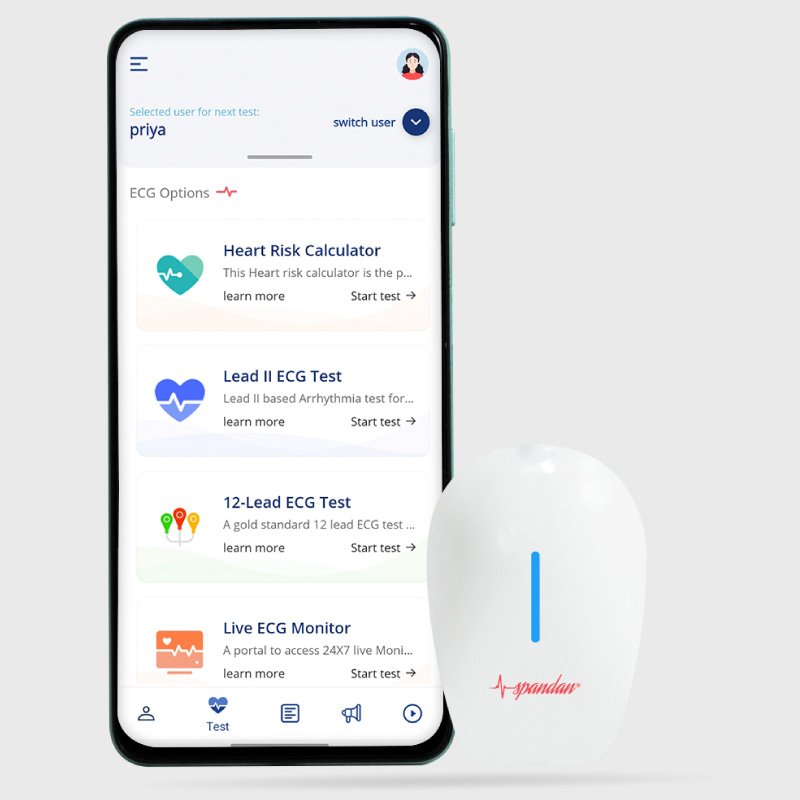
Author:- Mr. Ritesh Sharma
An electrocardiogram is a pivotal screening test in the realm of cardiac care. This test is done promptly by healthcare professionals when the patient shows symptoms of any kind of heart abnormalities. The EKG technology has undergone several changes over the years and has been prevalent in the healthcare industry for more than 100 years now. The history of ECG states that the very first ECG device was innovated by the Dutch Scientist Willem Einthoven who first created a string galvanometer in the early 20th century and later on coined the term ECG for it.
The first ECG device was a miracle of the EKG technology taking manpower of 5 humans to operate and weighing a whooping weight of 600 pounds. From that time scientific miracles to today. The basic technology of the electrocardiogram has been the same. However, its structure and features have developed in their stature a lot. So, how has EKG technology evolved from hospitals to the palm of your hand? Let’s decode this fascinating conundrum in this blog.
The Birth of Electrocardiography
The electrocardiogram was born from the genius mind of Willem Einthoven. This is one of the many contributions of Einthoven to heart health. The first practical electrocardiograph was innovated by the Dutch scientist in the year 1903. In this, the electrodes were attached to the skin of the patient, and healthcare professionals were allowed to diagnose various cardiac conditions by measuring the electrical activity of the human heart over a period of time. However, there were way too many limitations of this electrocardiograph. It was limited to hospital settings and required a very large area to contain. Furthermore, it took a lot of time for this ECG device to give interpretations of the waveforms of P-wave, QRS complex, and T-wave.
With this being said, this electrocardiograph was nothing short of a miracle of technology, which was a result of the collective efforts of Willem Einthoven and many other genius scientists of his time. The device quickly went from diagnosing only cardiac arrhythmias to something as hazardous as a heart attack.
Miniaturization and Accessibility
Now, in the latter half of the 20th century came and there was a sudden surge in medical innovations. This surge directly impacted the ECG devices and they became smaller in size and more accessible. The ECG devices could now be handled by a single healthcare professional and the size of the device became even more compact. The devices could now be used in clinical settings and ambulances in small rooms. However, the device despite being more accessible was costly for normal individuals and could only detect limited heart abnormalities.
The Rise of Wearable EKG Technology
It was the dawn of the 21st century and we witnessed an exponential increase in the wearable EKG technology. Several organizations innovated wearable heart rate monitors. These were more compact and lightweight than the traditional ECG monitoring devices and gave insights into the heart rate and other cardiovascular aspects of the patient within a few minutes. However, even this innovation did not come without its limitations, the wearable EKG technology was only competent in performing the Lead 2 ECG which only gives surface-level knowledge about the heart’s electrical activity. Hence, it could only detect a few heart abnormalities, such as heart palpitations and normal arrhythmias of different arrhythmia classifications.
The Innovation of Portable ECG Devices
Now that the 21st century has crossed more than 20 years, a staggering innovation in the realm of cardiac care has emerged. This innovation is a portable ECG device. One of the most fitting examples of these portable ECG devices is the Spandan ECG. Innovated by Sunfox Technologies, this ECG device is nothing but a miracle of EKG technology. This device can efficiently perform an ECG test at home or on the go. Furthermore, it is so small that it can fit the palm of your hand.
The 12-14 gram heavy Spandan ECG is a testament to how far the EKG technology has come. Let’s learn more about the astounding portable ECG device below.
The Trace Accuracy of the Portable ECG Machine
This portable ECG machine has a trace accuracy of 99.7% making it extremely reliable when it comes to performing an ECG test. The report generated from this portable ECG machine is highly accurate and vividly describes the P-wave ECG abnormalities, QRS complex abnormalities, and T-wave abnormalities.
6 Advanced Diagnostic Tests by the Portable ECG Machine
The portable ECG machine is capable of performing 6 advanced diagnostic tests a 12-lead ECG test, a Lead 2 ECG test, a Hyperkalimiar Test, Live ECG monitoring, a Heart Rate Variability Test, and a Heart Risk Calculator. These 6 advanced diagnostic tests enable this portable ECG machine to diagnose 12 types of arrhythmias of different arrhythmia classifications, 13 types of heart dysfunctions, and 14 types of myocardial infarctions. This detection capability makes the portable ECG machine infinitely superior to traditional ECG devices and wearable ECG devices.
In conclusion from a 600-pound heavy ECG device back in the early 20th century to portable ECG devices in the late 21st century, the EKG technology has taken big strides. The journey of electrocardiogram from room to the palm of your hand has been nothing short of astonishing. The ECG device is a gift in the domain of cardiac care which keeps on giving, the innovation of devices like Spandan ECG is a testament to this fact.



